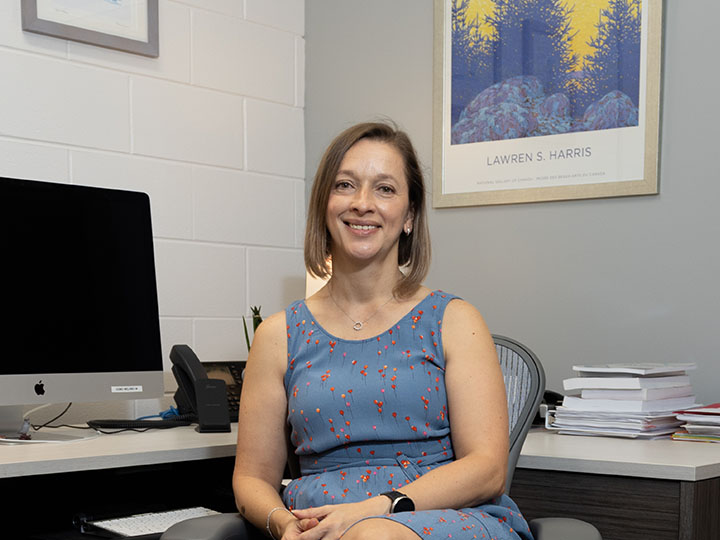
“The Grants to Enhance and Advance Research (GEAR) program offered by the UH Division of Research is excellent. For me, it worked exactly as intended,” said Anny Castilla-Earls, PI for a project that secured funding from the GEAR program and subsequently received an R01 grant from the NIH. “My proposal was initially selected at the college level by the Department of Communication Sciences and Disorders in the College of Liberal Arts and Social Sciences (CLASS). It then was chosen by GEAR, which provided $39,000 in funding to collect pilot data.”
The pilot study involved a feasibility and early efficacy assessment for a randomized clinical trial, considered the gold standard of evidence – but also a costly endeavor. The study involved 15 children diagnosed with Developmental Language Disorder (DLD), who each received 16 hours of language therapy. DLD is a language learning difficulty that is not attributed to intellectual disability, dyslexia, deafness or autism. Castilla-Earls’ hypothesis was that when a bilingual student was introduced to language therapy in their strongest language, the student would show improvement in both their spoken languages. Bilingual school aged children without other language-related challenges participated in the study, thanks to the GEAR funding, which provided nearly 240 hours of treatment for the participants and supported the compensation of the speech-language pathologists who provided the therapy.
Throughout the process, Castilla-Earls, along with co-principal investigator Amanda Owen Van Horne, a professor of communication sciences and disorders at the University of Delaware, remained confident in their fundable idea. Castilla-Earls had previous experience with smaller NIH grants from the National Institute on Deafness and Other Communication Disorders (NIDCD), maintaining a consistent vision for her research. "However, we needed pilot data. Researchers can’t just have good ideas, we need to show the feasibility and potential efficacy – this was what GEAR provided for me.”
After completing the data collection, she applied for and was granted a $3.27 million NIH R01 grant for a five-year study on DLD in bilingual school-aged children. Her initial findings were recently accepted for publication in the Journal of Speech-Language and Research, a prestigious research journal in the area of communication disorders and sciences. Scaling the research project from smaller-level funding to fit this substantial multi-million dollar award is Castilla-Earls' next objective. “We need to collect initial data just like we always do in research, then run analysis to be sure the hypothesis has a likelihood of panning out,” said Castilla-Earls. “With NIH funding, we will now expand the project to provide therapy for approximately 140 children.”
The scarcity of bilingual speech pathologists in the United States, accounting for less than 10% of the workforce, highlights the importance of the study's findings. The results may solidify the need for increased training of bilingual speech pathologists and could potentially impact other treatment approaches.
Ezemenari M. Obasi, the associate vice president for research administration, commented on Castilla-Earls’ achievement: "This is precisely what the GEAR program is designed to do. It's exciting to see that Dr. Castilla-Earls was able to translate the collected preliminary data into a funded NIH R01 - a prestigious research mechanism."